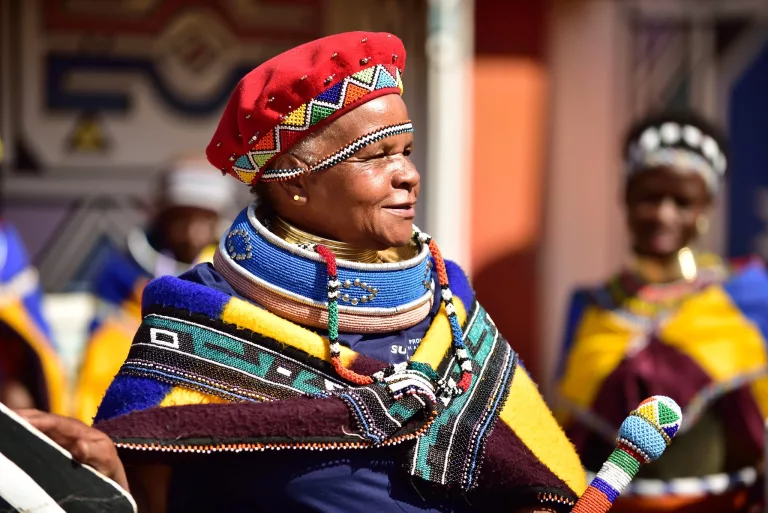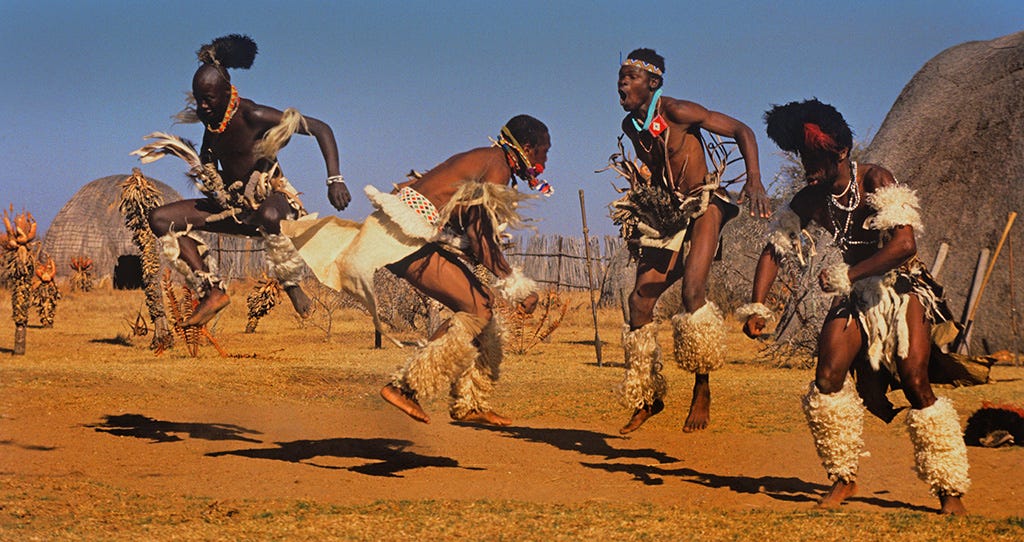The smart Trick of South African Culture Today That Nobody is Discussing
The smart Trick of South African Culture Today That Nobody is Discussing
Blog Article
Not known Details About South African Culture Today
Table of Contents10 Easy Facts About South African Culture Today ExplainedSouth African Culture Today - The Facts8 Easy Facts About South African Culture Today ExplainedSouth African Culture Today Things To Know Before You BuyEverything about South African Culture TodayThe smart Trick of South African Culture Today That Nobody is Talking About
An issue of importance in Zambian villages is the passing away of loved ones. All members of the village placed cash, time and initiative with each other for the burial of the deceased.Songs and dancing is a really vital aspect of the Zambian society. The various tribal units have their own dancing kinds; nevertheless, makishi is usual amongst all tribes.
South African Culture Today Fundamentals Explained
When it pertains to music, drums are utilized the most, with a range of drumming events. In Zambia, majority of the individuals are Christian; Protestant and Roman Catholic. There are small teams of Muslims and Hindus, with the remainder complying with local indigenous tribal beliefs.

South African heritage and society is tremendously diverse, and consists of several groups of people who each have their very own customs and ideas. Having such a variety of individuals and societies is what makes South Africa so special. In real sense of the phrase, we are a rainbow nation.
South Africa has around three hundred thousand Portuguese people residing in it. Making it the 7th on the listing of countries with the most Portuguese individuals in it beyond Portugal. Portuguese is not just a society, however it is likewise a language and a nationality. Portuguese individuals stem from the country of Portugal in Europe, however, due to Portugal (like many various other countries in Europe) checking out the globe and conquering various other countries throughout the 15th 20th centuries, South Africa has what we call Portuguese South African's living in it.
3 Easy Facts About South African Culture Today Explained
Among the noticeable functions of the topography is a plateau that covers virtually two thirds of the facility of the nation. The plateau complicated rises toward the southeast, where it culminates in the Drakensberg range, component of a cliff that separates the plateau from the seaside areas. The Drakensburg consists of Sparkling wine Castle, the highest possible top in the country.
The region north of the Witwatersrand, called the bushveld, inclines downward from eastern to west toward the Limpopo River, which develops the global border. The western area of the plateau, the middleveld, also descends in the direction of the west and varies in elevation in between the highveld and bushveld. Between the Drakensburg and the eastern and southern coast, the land comes down to the sea.
Nearer the coast there is a low-lying plain called the eastern lowveld. Southwest of the plateau the nation ends up being gradually more arid, providing means to the stony desert of the Great Karroo, verged on the east by the lower, much better sprinkled plateau of the Little Karroo. Dividing the completely dry southern interior from the sandy littoral of the southern coastline and West Cape is an additional array, the Langeberg.
South African Culture Today for Dummies
The country's racially, ethnically, and politically split history has actually produced national and subnational signs that still operate as symbols of the nation, and others icons that are approved just by certain groups. The monuments to white settler occupation and political prominence, such as the Afrikaner Voortrekker ("leader") Monument in Pretoria and the Rhodes Monument recognizing the British colonial realm builder and Cape prime preacher Cecil Rhodes, continue to be sectarian signs.
The very first modern inhabitants were the San ("bushman") hunter-gatherers and the Khoi ("Hottentot") individuals, that herded animals (South African culture today). The San might have been present for thousands of years and left proof of their presence in hundreds of old cave paintings ("rock art"). Bantu-speaking clans that were the forefathers of the Nguni (today's amaZulu, amaXhosa, amaSwazi, and vaTsonga peoples) and Tswana-Sotho language groups (today's Batswana and Southern and Northern Basotho) moved down from eastern Africa as very early as the fifteenth century

Both former republics these details of the Orange Free State and Transvaal (South African Republic) were established by Afrikaner inhabitants that defeated and dispossessed the Basotho and Batswana. Lesotho would certainly have been forcibly integrated right into the Orange Free State without the expansion of British protection in 1869. The utmost marriage of the nation resulted from the South African Battle (18991902) in between the British and the two Afrikaner republics, which decreased the nation to ruin at the beginning of the twentieth century.
Afrikaners traditionally considered themselves the just real South Africans and, while giving full citizenship to all homeowners of European descent, denied that condition to people of shade till the autonomous transition of 1994. British South Africans keep a sense of social and social link to Great Britain without damaging their identity as South Africans.
Not known Details About South African Culture Today
The diversity and fragmentation within ethnic groupings and the balance of tensions in between those groups during the twentieth century stopped interethnic civil dispute. While intergroup tensions over resources, privileges, and political prominence continue to be, those problems are as most likely to pit Zulu against Zulu as Zulu versus Xhosa or African versus Afrikaner.
From colonial India, British vendors and administrators brought the curved steel decorative roofings and slender lace job columns that still exemplify the outdoor patios of homes arounds and cities throughout the nation. Holy places add an essential architectural facet also in the smallest towns. Along with the skyrocketing steeples and classic stonework of Afrikaans Dutch Reformed churches, Anglican churches, synagogues, mosques, and Hindu temples give selection to the religious building scene.

Butchering and the developing of conventional grain beer are important in safeguarding the participation and a good reputation of the forefathers that are taken into consideration the guardians of good luck, success, and well-being. Indian communities keep their native cooking practices and use them on Islamic and Hindu ritual and ceremonial occasions. Afrikaners and Coloured individuals gather at weekends and special events at multifamily barbecues called braais, where area bonds are reinforced.
Due to the fact that this was the main financial venture of both black Africans and white colonists, conflict between those groups centered on the ownership of grazing land and animals. In 1867, the biggest ruby down payments in the globe were found at Kimberley in the west central location. The wide range from those areas aided fund the exploitation of the best gold coral reef on the planet, which was uncovered on the Witwatersrand in 1886.
Fascination About South African Culture Today
This caused misconceptions and intentional misstatement in the transactions of white settlers and federal government authorities with African chiefs during the early american duration (South African culture today). In the facility of African books, resource some facets of directory common and mainly "tribal depend on" land period were preserved, and also in white rural areas, kinds of common tenure were still exercised in locations with African areas
After the democratic transformation of 1994, programs for land restitution, redistribution, and reform were set up, however progress has actually been slow-moving. The white minority still manages eighty percent of the land. In the wake of farming land invasions in Zimbabwe, the Division of Land Affairs has actually pledged to speed up land redistribution.
Report this page